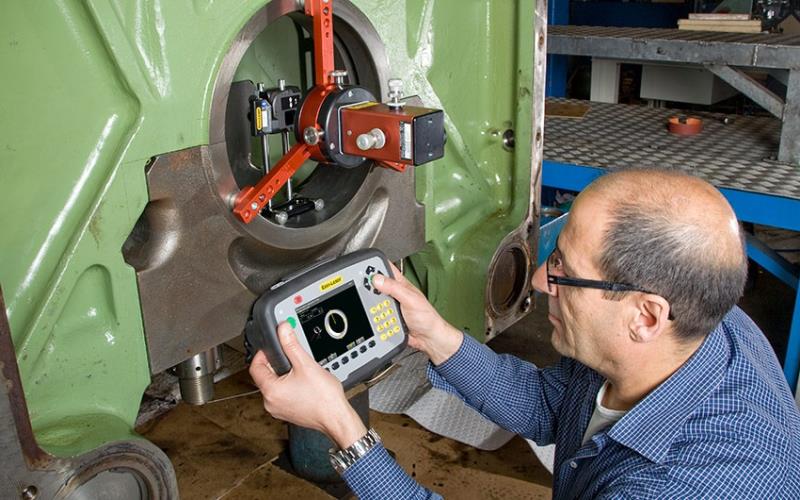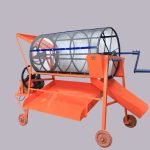In the competitive landscape of modern manufacturing, precision is not just an advantage; it is a prerequisite for success and sustainability. As industries evolve and production processes become increasingly complex, the need for more accurate alignment in machinery has never been greater. This has led to the development and refinement of advanced laser alignment tools, which play a pivotal role in ensuring high levels of accuracy and thereby, enhancing overall operational efficiency.
The Role of Laser Alignment in Modern Manufacturing
Laser alignment systems are designed to deliver precise measurements and adjustments, which are critical in various industrial applications. These tools are essential for the correct alignment of rotating machinery shafts, ensuring they operate efficiently, with minimal wear and energy consumption. This precise alignment is crucial as even slight misalignments can lead to significant machinery damage and downtime.
Benefits of Precision Alignment
- Reduced Machine Downtime: Proper alignment reduces the strain on motors and bearings, decreasing the likelihood of premature failures.
- Increased Machine Lifespan: By minimizing mechanical stress, precision alignment extends the lifespan of critical machinery components.
- Energy Savings: Aligned machines operate more efficiently, consuming less power and thereby reducing energy costs.
- Improved Product Quality: Precision in machine setup helps in maintaining the consistency of the manufacturing process, enhancing product quality.
Advancements in Laser Alignment Technology
The advancement in laser alignment technology has been significant over the years, moving from simple visual techniques to sophisticated laser-driven systems that offer high accuracy and ease of use. These advancements include features like enhanced data connectivity, real-time feedback, and user-friendly interfaces.
Integration with Industry 4.0
Modern laser alignment tools are increasingly integrated with Industry 4.0 technologies. They are equipped with IoT capabilities, allowing for real-time monitoring and data analysis. This integration facilitates predictive maintenance strategies, where data collected from the alignment process can be used to predict and prevent potential failures before they occur.
Practical Applications of Laser Alignment Tools
In practice, laser alignment tools are used in a variety of settings, from small workshops to large manufacturing plants. They are crucial in sectors such as automotive, aerospace, and energy, where high precision is mandatory. For example, in wind turbines, laser alignment tools are used to align the generator and gearbox, which is essential for optimal performance and efficiency.
Case Study: Automotive Assembly Line
An automotive manufacturer recently integrated advanced laser alignment systems into their assembly line. The result was a 30% reduction in machine downtime and a significant improvement in the quality of the vehicles produced. This not only saved costs but also enhanced the brand’s reputation for reliability.
Essential Tools for Vibration Analysis
While laser alignment tools are crucial for setting up machinery accurately, maintaining that precision over time requires ongoing monitoring and adjustment. This is where vibration analysis comes into play. A handheld vibration analyzer is an essential tool in this regard. It helps in detecting discrepancies and potential issues in machinery by analyzing the vibrations produced during operation. By identifying unusual vibrations early, technicians can undertake preventive maintenance to rectify misalignments before they lead to major issues.
Why Vibration Analysis Matters
- Early Problem Detection: Vibration analysis helps in identifying problems before they lead to serious machinery failure.
- Cost Efficiency: Preventive maintenance based on vibration analysis data can significantly reduce repair costs.
- Safety: Regular vibration analysis ensures that machinery is operating safely, reducing the risk of accidents in the workplace.
Future Trends in Laser Alignment
As we look to the future, laser alignment technology continues to evolve. The focus is now shifting towards even more integrated systems that combine laser alignment with other diagnostic tools such as thermal imaging and acoustic analysis. Such multifunctional systems are set to revolutionize maintenance practices in manufacturing, making them more streamlined and cost-effective.
Conclusion
The importance of precision in the manufacturing process cannot be overstated. With the advent of advanced laser alignment tools, industries are now better equipped than ever to achieve the high levels of accuracy required for competitive and sustainable operation. These tools, along with complementary technologies like vibration analysis, are essential in maintaining the health and efficiency of industrial machinery. As technology advances, the integration of these tools with digital industrial strategies will undoubtedly continue to enhance their effectiveness, making them indispensable in the pursuit of manufacturing excellence.





